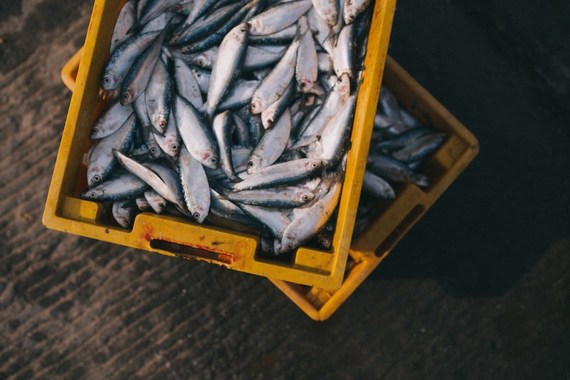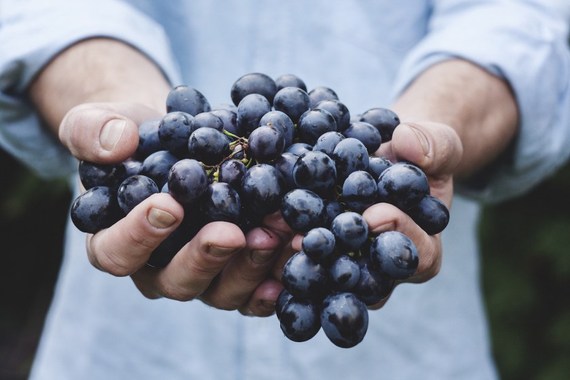Ever wonder how the first Olympic athletes trained and ate? If you're looking to celebrate the Summer Games with some great Greek foods, you've got a rich history to draw on. In honor of the approaching Olympic games, let's dive deeper into Ancient Greek eating habits and how they compare to traditional Greek foods today.
The first Olympic games took place in Olympia around 776 B.C. So what exactly did Olympians eat? According to one account, the legendary wrestler Milo of Croton feasted on a diet of 20 lbs of meat, 20 lbs of bread and 18 pints of wine daily. That's approximately 57,000 calories every day! For regular Greek citizens, however, historians believe a more realistic ancient diet would have been similar to a modern Mediterranean one, comprised of an abundance of plant foods, low-to-moderate amounts of cheese, yogurt, fish, poultry and goat, and moderate wine consumption.
Homeland of historic athletes and birthplace of the Olympics, Greece is also the country most people associate with the "Mediterranean Diet," which has become a popular way of eating in recent years. The Mediterranean Diet is believed to promote health and prevent or counter metabolic syndrome, diabetes, cancer, atherosclerosis, chronic inflammation, obesity, cognition disorders and pulmonary diseases. Some additional defining characteristics include olive oil as the principal fat source, fresh fruit (like grapes) as a typical dessert and limited red meat.
Oregano, thyme, bay leaves, rosemary, lemon, mint and sumac are some of the raw seasonings and flavors that characterize Greek food. Similar to what ancient Olympians probably ate, olives, yogurt, feta cheese, fresh seafood, meat from small local farmers and fresh dairy products are all key ingredients found throughout the country. Because Greece is comprised of numerous islands, rugged terrain and plenty of wide open sea, the cuisine varies by region, leading to endless flavor combinations.
One thing all Greek dishes have in common, however, is bread. Considered a staple item and eaten with every meal, bread was an integral component to the ancient Olympian meal plan.
With the Olympics taking place this August, challenge yourself to try these eight traditional Greek foods in their honor.
Baklava (bahk-lah-VAH) is a baked dessert made from nuts (typically walnuts or pecans), paper-thin sheets of phyllo dough and honey. Though it sounds simple, it's subtlety delivers tremendous flavor and texture unlike any other dessert.
Tzatziki (tsah-ZEE-kee) is a sauce traditionally made with yogurt, cucumber, garlic and salt and commonly served with fresh bread or in a sandwich-style entree called a gyro.
Gyros (YEER-oh) are often considered the "hamburger of Greece" and contain shaved rotisserie meat (either beef, lamb or pork) served on a round pita bread with tzatziki, onions, lettuce and tomato.
Spanakopita (spah-nah-KO-pee-tah) or spinach pie, is a savory, phyllo-wrapped dish which contains feta cheese, chopped onions, scallions and fresh spinach.
Taramasalata (tah-rah-moh-sal-AH-tah) is a Greek caviar which is made of carp roe (fish eggs) and typically eaten on bread.
Moussaka (moo-sah-KAH) is a cross between Italian eggplant Parmesan and English shepherd's pie. The baked casserole contains eggplant, potatoes, onions, ground beef or lamb, oil and cinnamon -- all topped with a creamy béchamel sauce.
Haloumi (huh-LOO-mee) is a brined white cheese usually made from a mixture of sheep and goat milk. It has a strong salty flavor and semi-hard texture similar to that of mozzarella. Halloumi is easy to fry or grill because of its high melting point and delicious on its own or served over salad.
Dolmades (dol-MAH-thez) are stuffed grape leaves. Depending on which region or Greek household you're in, these finger foods might be filled with mincemeat and rice or a combination of thyme, dill, fennel, oregano or pine nuts.
Contributed by Chelsea Cordes, RDN
You might also like:
15 Sausage Dishes to Take You Around the World
4 Reasons to Get Caught With Your Hand in the Pickle Jar
The Backstory and Basics of the Bloody Mary
For all the latest on food, drinks and restaurants, visit the Reserve blog and follow us on Twitter, Facebook and Instagram.




